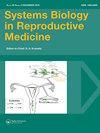转录物完整性指数(TII)提供了精子RNA的标准测量
IF 2.1
4区 医学
Q3 ANDROLOGY
引用次数: 1
摘要
摘要标准化RNA质量是解释RNA-seq数据的关键,因为受损样本可以掩盖潜在的生物学。在评估具有高RNA片段的样品中的RNA质量时,挑战仍然存在。例如,精子成熟不可或缺的程序性片段化和细胞质排出是解释RNA-seq数据复杂性的一个主要例子,因为片段化可以是随机的和/或靶向的。为了应对这一挑战,我们开发了一种算法,可以准确测量精子等高碎片样本中的RNA质量。使用转录完整性指数(TII)算法对1000个先前鉴定的丰富精子转录物的完整性进行独立可视化和评估,以鉴定完整的转录物。使用GTEx组织数据库评估来自视觉和TII算法的全长转录物对人类睾丸的偏好。然后通过四分位数范围(IQR)对样本进行过滤,确定那些最大数量的转录物未能通过视觉或TII阈值的样本。转录本列表重叠,形成了一组完整的转录本,用作TII标准。每个样本都被重新评估为该TII完整转录物集的函数,质量差的样本被确定为转录物数量最多的样本。虽然个体学上与精子发生和/或受精相关的作用丰富,但样本并没有根据出生结果进行分离。TII算法被证明是从精子中识别类似质量样本的有效方法,精子是一种富含生物碎片RNA的细胞类型。该算法应便于使用因高水平RNA断裂而受损的样本进行其他研究,如福尔马林固定石蜡包埋样本。作为评估男性健康状况的必要条件,TII为长期以来备受追捧的标准提供了一种解决方案,该标准可以识别类似质量的样本。本文章由计算机程序翻译,如有差异,请以英文原文为准。
The transcript integrity index (TII) provides a standard measure of sperm RNA
Abstract Standardizing RNA quality is key to interpreting RNA-seq data as a compromised sample can mask the underlying biology. The challenge remains when evaluating RNA quality in samples with high RNA fragmentation. For example, programmed fragmentation and cytoplasmic expulsion, integral to sperm maturation, is a prime example of the complexities of interpreting RNA-seq data, given that fragmentation can be random and\or targeted. To meet this challenge, we developed an algorithm that accurately measures RNA quality in samples with high fragmentation, such as spermatozoa. The integrity of 1,000 previously identified abundant sperm transcripts were independently visualized and evaluated using the Transcript Integrity Index (TII) algorithm to identify intact transcripts. Full-length transcripts from visual and the TII algorithm were evaluated for testis preference in humans using the GTEx tissues database. Samples were then filtered by the Interquartile Range (IQR), identifying those in which the greatest number of transcripts failed to pass the visual or TII thresholds. Transcript lists were overlapped, forming the set of intact transcripts used as TII standards. Each sample was re-evaluated as a function of this TII set of intact transcripts, with poor quality samples identified as those failing in the largest number of transcripts. While ontologically enriched in roles related to spermatogenesis and/or fertilization, samples did not segregate based on birth outcome. The TII algorithm proved an effective means to identify samples of similar quality from sperm, a cell type enriched in biologically fragmented RNAs. The algorithm should facilitate other studies using samples compromised by high levels of RNA fragmentation, such as Formalin-Fixed Paraffin-Embedded samples. Requisite to assessing male health, TII provides a solution to the long-sought-after standard that identifies samples of similar quality.
求助全文
通过发布文献求助,成功后即可免费获取论文全文。
去求助
来源期刊
CiteScore
4.30
自引率
4.20%
发文量
27
审稿时长
>12 weeks
期刊介绍:
Systems Biology in Reproductive Medicine, SBiRM, publishes Research Articles, Communications, Applications Notes that include protocols a Clinical Corner that includes case reports, Review Articles and Hypotheses and Letters to the Editor on human and animal reproduction. The journal will highlight the use of systems approaches including genomic, cellular, proteomic, metabolomic, bioinformatic, molecular, and biochemical, to address fundamental questions in reproductive biology, reproductive medicine, and translational research. The journal publishes research involving human and animal gametes, stem cells, developmental biology and toxicology, and clinical care in reproductive medicine. Specific areas of interest to the journal include: male factor infertility and germ cell biology, reproductive technologies (gamete micro-manipulation and cryopreservation, in vitro fertilization/embryo transfer (IVF/ET) and contraception. Research that is directed towards developing new or enhanced technologies for clinical medicine or scientific research in reproduction is of significant interest to the journal.

 求助内容:
求助内容: 应助结果提醒方式:
应助结果提醒方式:


